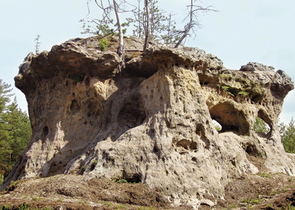The Journal is published by the Nature Conservation Agency of the Czech Republic in cooperation with the Cave Administration of the Czech Republic, the Krkonoše Mts. National Park Administration, the Bohemian Forest Mts. National Park Administration, the Podyjí National Park Administration and the The Bohemian Switzerland National Park Administration. It has been published since 1946.
cs / en
Nature Conservation 2/2012 — 23. 8. 2012 — Nature and Landscape Management — Print article in pdf
Sádlo J., Petřík P. & Boublík K.: Pine Forests in the Relic Hemiboreal Lowland Coniferous Forest Eco
využití, péče a ochrana

Palaeobotanical methods have recently revealed that the Doksy Area (North Bohemia) is an isolated hemiboreal lowland coniferous forest on the southwestern edge of its global distribution range. At the same time, vegetation is a relic from the early Holocene developed on the landscape scale there.
The above fact is a strong argument for protecting the area as well as for practical conservation measures. Pine forests and forests with high proportion of pines cover approx. 80% of the future Protected Landscape Area and include, in addition to dominating Boreo-continental acidophilous pine forests, also peat--bog pine forests, nutrient-poor lichen pine forests and calcareous steppe pine forests. Although the forests have been intensively used since the High Middle Ages, their composition was not substantially changed. The current intensive forest management is based on extensive clear-cuts, soil disturbances (tillage on woodland clearings up to 0.5 meter in the depth) and underground destruction. In addition to affects caused by game profiting from the forest management practices, these methods are strongly harmful for local pine forest biological diversity. After deforestation near rock pine forests, these consequently become dry due to microclimatic changes and their soil mantle is totally eroded in an extremely short period, namely within a few years only: their undergrowth fully disappears. For conservation of the local forest, the authors suggest: (a) to divide forests into commercial growths aiming at intensive use and minor stands to be consistently protected; (b) to maintain around rock pine forests, particularly those of the steppe character, an uncut buffer zone; (c) to protect species-rich slope taluses at the foot of calcareous rocks, which have been damaged by tourism, by fencing by the time when vegetation shall be regenerated.

